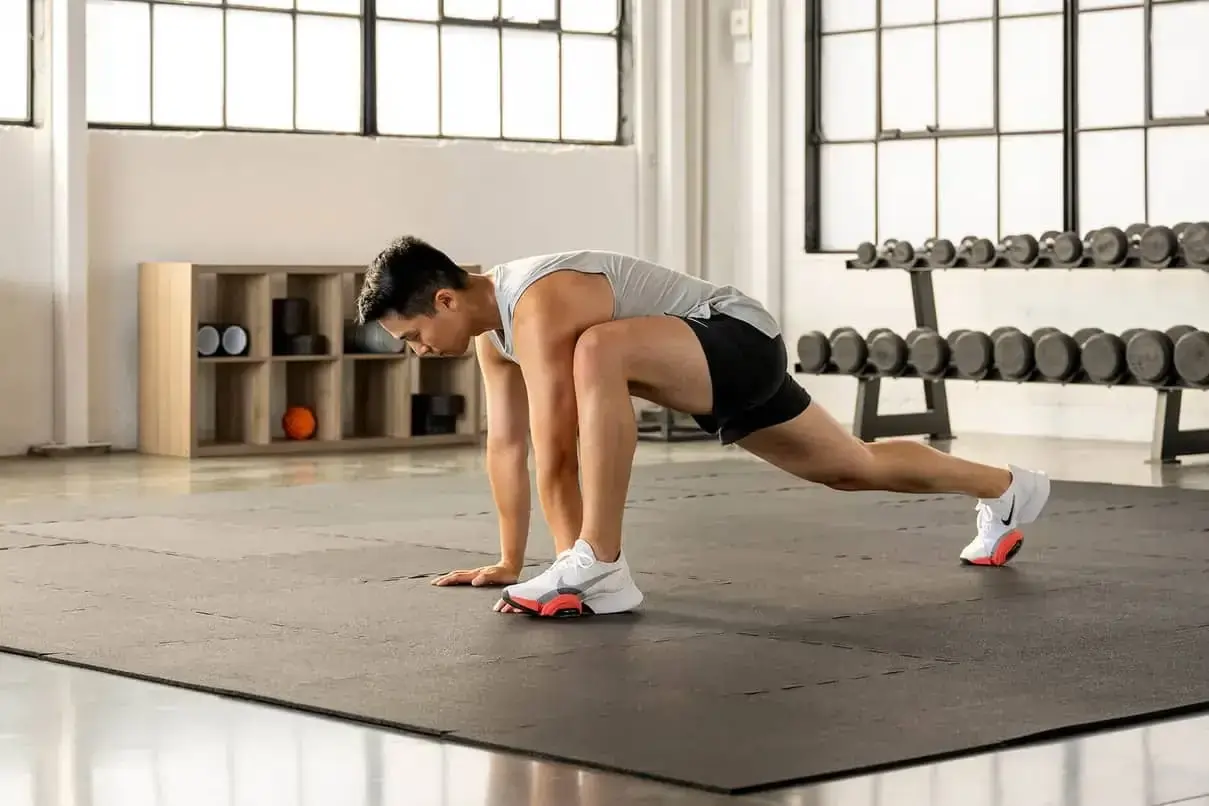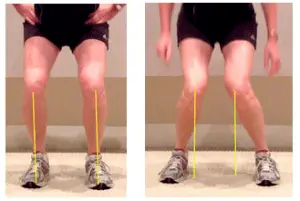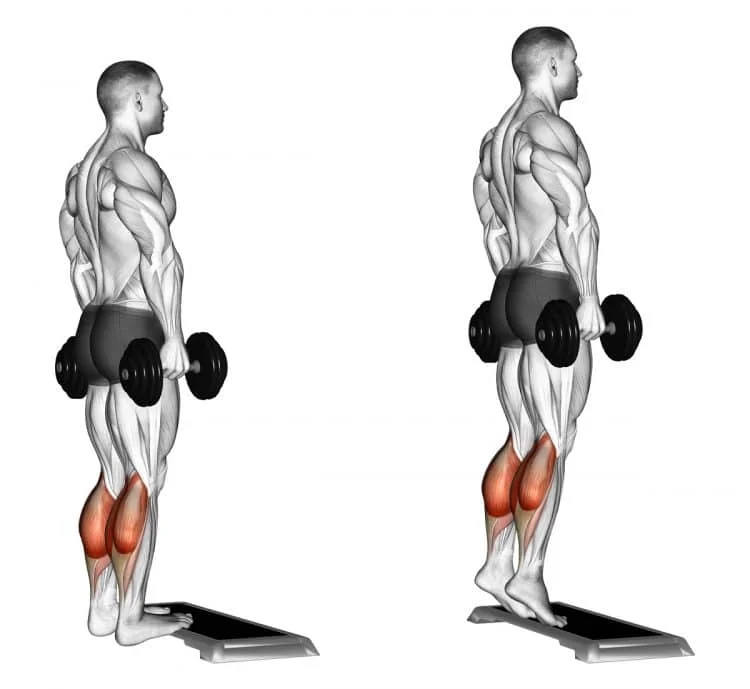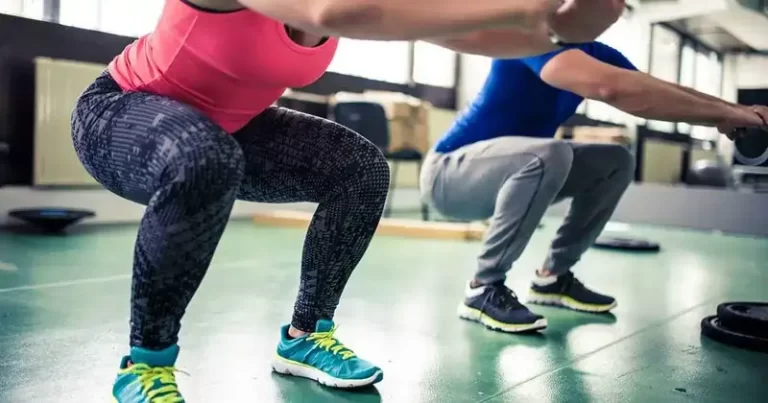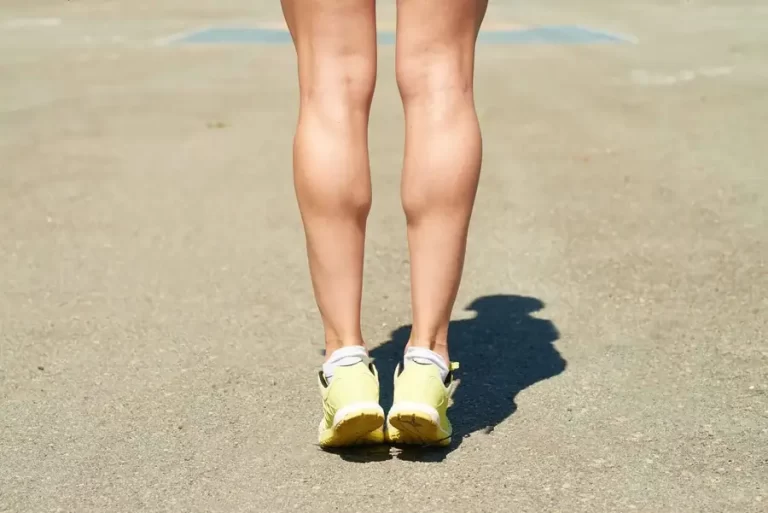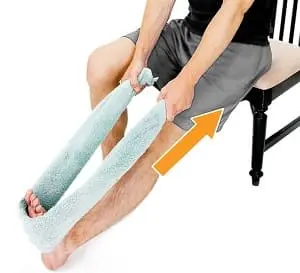15 Best Exercise to Improve Hip Mobility
Introduction:
The body’s ability to move and function depends on hip mobility. It explains how the hip joints can move through their whole range of motion with flexibility and comfort. Activities like walking, running, bending, and engaging in various sports movements all require good hip mobility. The hips’ range of motion can be restricted by tightness and stiffness caused by sedentary lifestyles, extended sitting, and irregular activity.
The most effective Exercises To Improve Hip Mobility and prevent injury are stretching and strengthening the hip muscles.
Numerous advantages can result from increasing hip mobility, such as a lower chance of injury, better sports performance, better posture, and more flexibility overall. There are numerous hip exercises to increase hip mobility. Anyone can benefit from these top hip exercises, including seniors and people with arthritis, as well as runners, weightlifters, and hikers.
Exercise to Improve Hip Mobility:
Hip Flexor Stretch
- Kneel on both knees on a yoga mat or exercise mat.
- The toes of your feet should be firmly placed against the mat, and your bottom should be on the heels.
- Lean forward and press your palms into the mat.
- To avoid locking, keep your hands shoulder-width apart and bend your elbows a little.
- Make a 90-degree angle by bringing your left knee forward into the space between your arms and resting your left foot on the mat in front of you.
- Place both hands on your left leg in front of you for balance and support while straightening your upper body.
- Extend your right leg behind you.
- Place the heel of your right foot on the mat and bend your right knee against it.
- Bend gently forward for a longer stretch.
- Hold this position for a few seconds.
- Then return to your neutral position.
- Then relax.
- Repeat this exercise five to ten times.
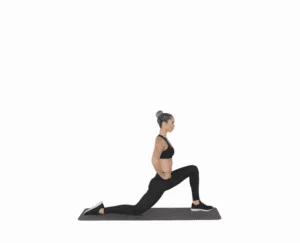
Clamshell exercise
- Place your legs together and bend your knees while lying on your left side.
- Now contract your abdominal muscles.
- Raise your right knee gradually while keeping your feet together.
- Hold this position for a few seconds.
- Then return to your neutral position.
- Then relax.
- Repeat this exercise five to ten times.
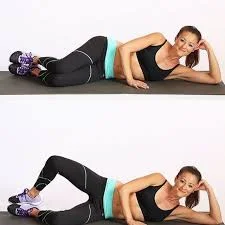
Frankenstein walk
- With your palms facing down, begin by extending your arms straight out in front of you.
- Swing one straight leg up as you go forward, making sure it forms a right angle with your body.
- Your toes’ tips should be near your palm.
- After a minute of lowering that leg, repeat with the other.
- Then return to your neutral position.
- Then relax.
- Repeat this exercise five to ten times.
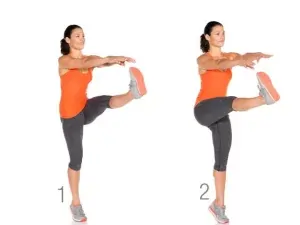
Frog Stretch
- Get down on your hands and knees at the tabletop, particularly on a comfortable surface.
- As much as your flexibility permits, turn your knees and thighs out.
- Maintaining your shins parallel to one another, flex your feet and open them to align with your knees.
- To deepen the stretch, begin lowering your pelvis if you can.
- Keep your neck from arching back or dropping.
- Breathe in and out slowly, gradually, and mindfully.
- To go deeper, you may move your hips back and forth, but to avoid straining or forcing the position, constantly pay attention to how you feel.
- Bring your legs together and gently settle into Child’s pose to get out of the position and rest.
- Then relax.
- Repeat this exercise five to ten times.
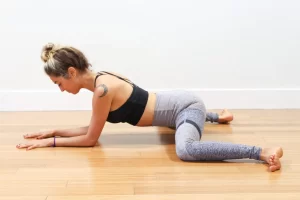
Hip circles
- Place your feet slightly wider than shoulder-width apart and stand straight.
- Put your hands on your hips and bend your knees a little.
- With your hips, carefully rotate them in big circles.
- Then return to your neutral position.
- Then relax.
- Repeat this exercise five to ten times.
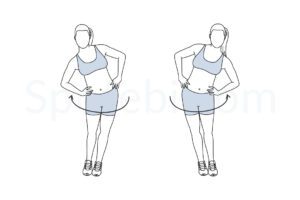
Leg Swings
- Start by straightening your hips and standing up straight.
- Maintain your balance by using your left hand to grasp a chair, counter, railing, or other sturdy item.
- Gently cross your left leg over your right leg and raise it as exactly parallel to the ground as you can.
- Rather than kicking forcefully, this should be a soft, flowing movement.
- Repeat after holding your leg up for a moment and lowering it gradually.
- Then return to your neutral position.
- Then relax.
- Repeat this exercise five to ten times.
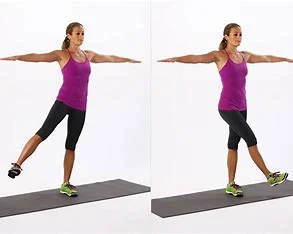
Knee to chest stretch
- When you lie on your back, one leg should be straight and the other knee bent.
- Holding your hands together, lift your knee to your chest while keeping it bent.
- Don’t move the other leg off the ground.
- If a little pillow is more comfortable, you can place it beneath your head and neck.
- If maintaining a straight opposing leg while stretching causes back pain, bend that knee as well and keep that foot flat on the ground.
- Hold this position for a few seconds.
- Then return to your neutral position.
- Then relax.
- Repeat this exercise five to ten times.
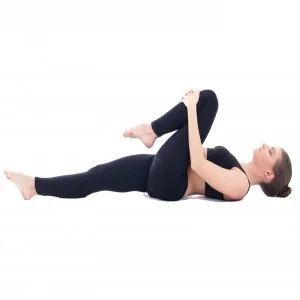
Bear Sit
Applying the bear stretch regularly helps build stronger inner thighs and hip adductor muscles.
- Take a seat on the mat with your feet in front of you.
- Stretch your knees and feet outward, keeping a straight line from knee to heel.
- Grasp each ankle with your outstretched hand and pull your knees apart.
- Hold the position for about a few seconds after slowly straightening your lower back.
- Breathe in and out slowly while holding.
- To begin the active stretch, let go of your ankles and raise your arms straight in front of you.
- Squeeze your shoulder blades with your hands while applying pressure.
- Hold this position for a few seconds.
- Then return to your neutral position.
- Then relax.
- Repeat this exercise five to ten times.
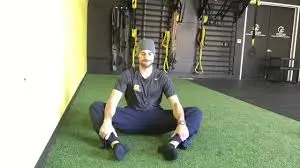
Lateral step-up
- Standing upright, position your right side toward an elevated surface, like a plyo box or flat bench.
- Lift your right foot off the ground by pushing your knee toward the ceiling.
- Make sure your right foot is above the bench by pushing your knee outward.
- Maintain a straight body posture while placing your right foot on the elevated platform.
- Put your right heel and midfoot into the bench, brace your core and glutes, and raise yourself off the ground.
- Make sure your feet are level at the top.
- On the highest point, tighten your glutes, hamstrings, and the quadriceps.
- Slowly return to the starting posture by gently stepping on your left foot’s heel.
- Repeat this exercise five to ten times.
- Then relax.
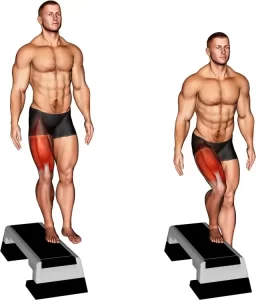
Butterfly
- Take a seat in the beginning.
- Bring the foot soles together while letting the knees drop outward.
- Hold the feet with your hands.
- Knees should be gently pressed toward the floor.
- Breathe deeply while expanding your chest.
- Exhale while keeping your posture relaxed and folding forward.
- Then return to your neutral position.
- Then relax.
- Repeat this exercise five to ten times.
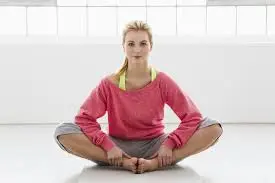
Seated Hip marching
- In a chair, begin by maintaining a neutral spine.
- Keeping your knee bent, raise your left leg as high as you can.
- Carefully and gradually lower your foot.
- Then return to your neutral position.
- Then relax.
- Repeat this exercise five to ten times.
- Next, complete the right side.
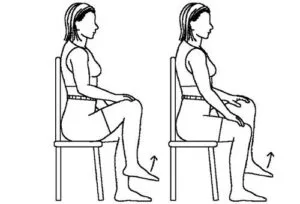
Single-leg Romanian deadlifts
- Place two dumbbells in your hands and hold them hip-width apart.
- In a balanced position, raise one foot and keep it just above the ground.
- With your waist bent, drop your body toward the floor by pushing your butt back.
- Keep your hips and shoulders square to the floor by maintaining contraction.
- Lower until your hamstrings start to pressure or your back starts to feel tight.
- Hold this position for a few seconds.
- Then return to your neutral position.
- Then relax.
- Repeat this exercise five to ten times.
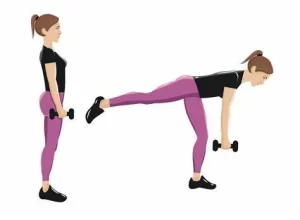
Fire hydrant
- Start with taking a kneeling position on the ground.
- Allow your hip to expand by raising your right leg while maintaining a flat left knee.
- Maintaining your hips level to the floor, raise your right leg to 90 degrees or as high as your range of motion permits.
- Hold this position for a few seconds.
- Then relax.
- Repeat this exercise five to ten times.
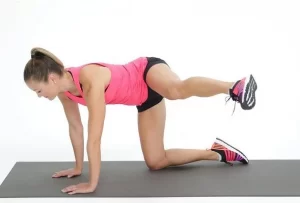
Lateral-band-walks
- With your feet hip-width apart, keep a resistance band looped around your knees.
- Push your hips back and lower yourself to squat gradually.
- Your right leg should be a little broader than shoulder-width apart to start.
- In order to have your feet hip-width apart again, step in with your left leg.
- Continue taking ten steps laterally.
- Throughout the exercise, avoid letting your knees drop inward.
- On the other side, repeat the exercise.
- Then return to your neutral position.
- Then relax.
- Repeat this exercise five to ten times.
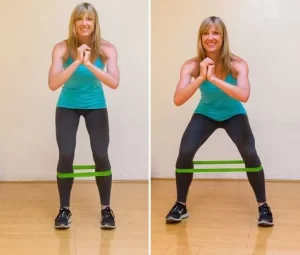
Lateral lunge
- To start, stand with your feet hip-width wide.
- When you step outside, keep your hips back and bend your left leg.
- One side of your lower body should feel as though you are attempting to sit in a chair.
- Hold this position for a few seconds.
- Push off your left foot to release the position and go back to the beginning.
- Then relax.
- Repeat this exercise five to ten times.
- Repeat the exercise on the other side.
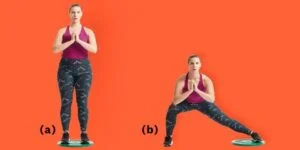
When exercising, what safety measures are necessary?
- Take a break in between your workouts.
- When exercising, keep your posture upright.
- Stay hydrated
- Avoid doing challenging workouts.
- Exercise should be stopped as soon as the pain becomes severe.
- As recommended by the exercise’s instructions, stretching should be performed both before and after sessions.
- Make sure whatever equipment you’re using fits properly.
- Properly extend, hold, and repeat the exercise.
- Make light bending and stretching movements.
- Wear loose-fitting clothing to improve your range of motion and promote relaxation throughout exercise.
When do you not perform exercises for hip mobility?
Exercise should be avoided in the following situations, or you can speak with a physical therapist before beginning any exercise.
- Acute injury
- Fever
- Headache
- Unstable hip joint
- If your doctor told you to rest
- If working out hurts
- If pain worsens after working out
- Hip joint Replacement
- The strain on the hip joint’s surrounding muscles
Summary:
Consult a doctor before starting a new exercise regimen if you have any health issues. One of the best methods to improve hip mobility is to perform certain stretches and exercises. Frequent exercise can lower the risk of hip problems and improve mobility. Include the exercises in your plan that are perfect for your fitness level and goals.
FAQ:
Is it possible to make the hips more flexible?
In addition to limiting general body mobility and athletic ability, stiff hips can exacerbate lower back pain. But, some exercises and stretches can help us increase hip mobility, such as weighted squats or stretching on the finest yoga mat.
What leads to limited hip mobility?
Direct trauma or infection may also be the cause, but repetitive use and excessive strain on the tissues surrounding your hip joints are the most prevalent causes.
Is hip mobility improved by walking?
Regular walking, especially uphill or downhill, also benefits hip mobility. Walking uphill may require climbing, and going downstairs requires you to lean forward more.
What is the duration required to increase hip mobility?
Improvements in hip mobility may usually be observed in a few weeks to a few months with regular practice, which includes specific exercises and stretches.
Which hip exercise is best for you?
Hip circles
Fire hydrant
Frankenstein walk
Clamshell
Step-ups with weights
Is strength increased by hip mobility as well?
Mobility is the range of motion of a joint, whereas the muscles and ligaments surrounding the hip joint decide its strength. They are equally vital, so neither is more significant than the other.
Are hip mobility exercises beneficial to perform every day?
It improves alignment and posture, lowers the chance of injury, and improves athletic performance. Your general health and quality of life can significantly improve if you include hip mobility exercises in your routine.
Is speed increased by hip mobility?
You may increase your running move by building strength with every step thanks to strong, powerful hips.
References:
- June 9, 2023: Luhar, F. Samarpan Physio’s Top 11 Exercises for Increasing Hip Mobility. Physiotherapy Clinic of Samarpan. “The Best Exercise for Improving Hip Mobility” (https://samarpanphysioclinic.com/11)
- September 22, 2024: Schlinger, A. 20 Hip Exercises to Increase Mobility and Strength. Wellness. Fitness/hip-strengthening-exercises https://www.health.com
- Top Hip Mobility Stretches and Exercises Suggested by Physiotherapists. (n.d). the Nike website. Stretches for hip mobility: https://www.nike.com/in/a
- E. Cronkleton (2023, Feb. 13). 14 Hip Exercises to Build Muscle and Increase Mobility. Health Line. Hip-exercises #takeaway: https://www.healthline.com/health/
- Image 4, Mandukasana (frog position): A guide to the pose from The Yoga Collective. April 10, 2020. The Yoga Collective. https://www.theyogacollective.com/poses/mandukasana-frog
- Image 8, Premier Exercise Equipment. January 30, 2016. Opener for Bear Sit [Video]. YouTube. YouTube video: https://www.youtube.com/watch?v=oeAWraWs23c
- Image 9, August 11, 2024; Saini, V. Step up laterally by strengthening your hamstrings, glutes, and quadriceps. lateral-step-up-guide, Fitness Volt. https://fitnessvolt.com/

